BLOG
THE JEWELLERY MANUFACTURING PROCESS
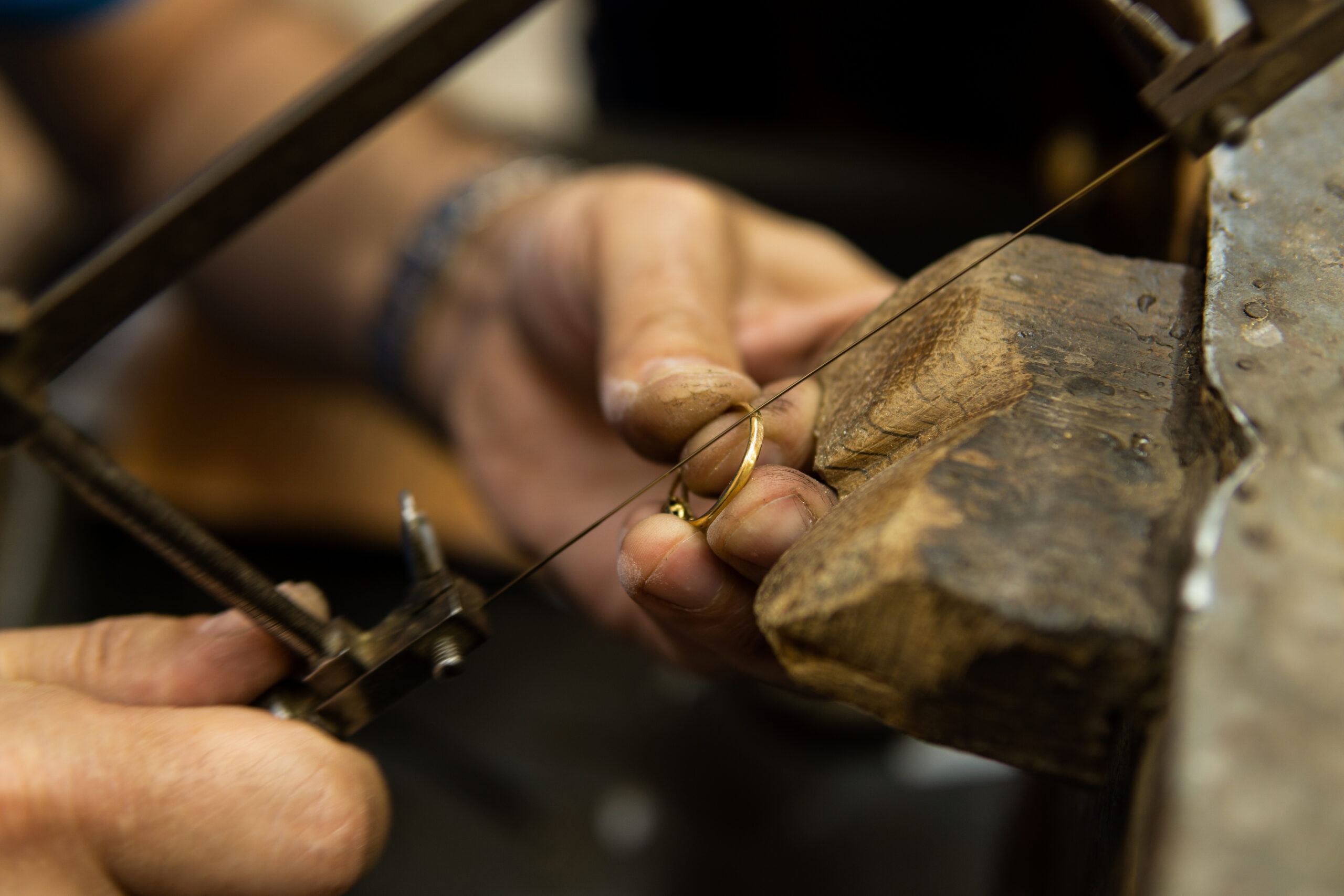
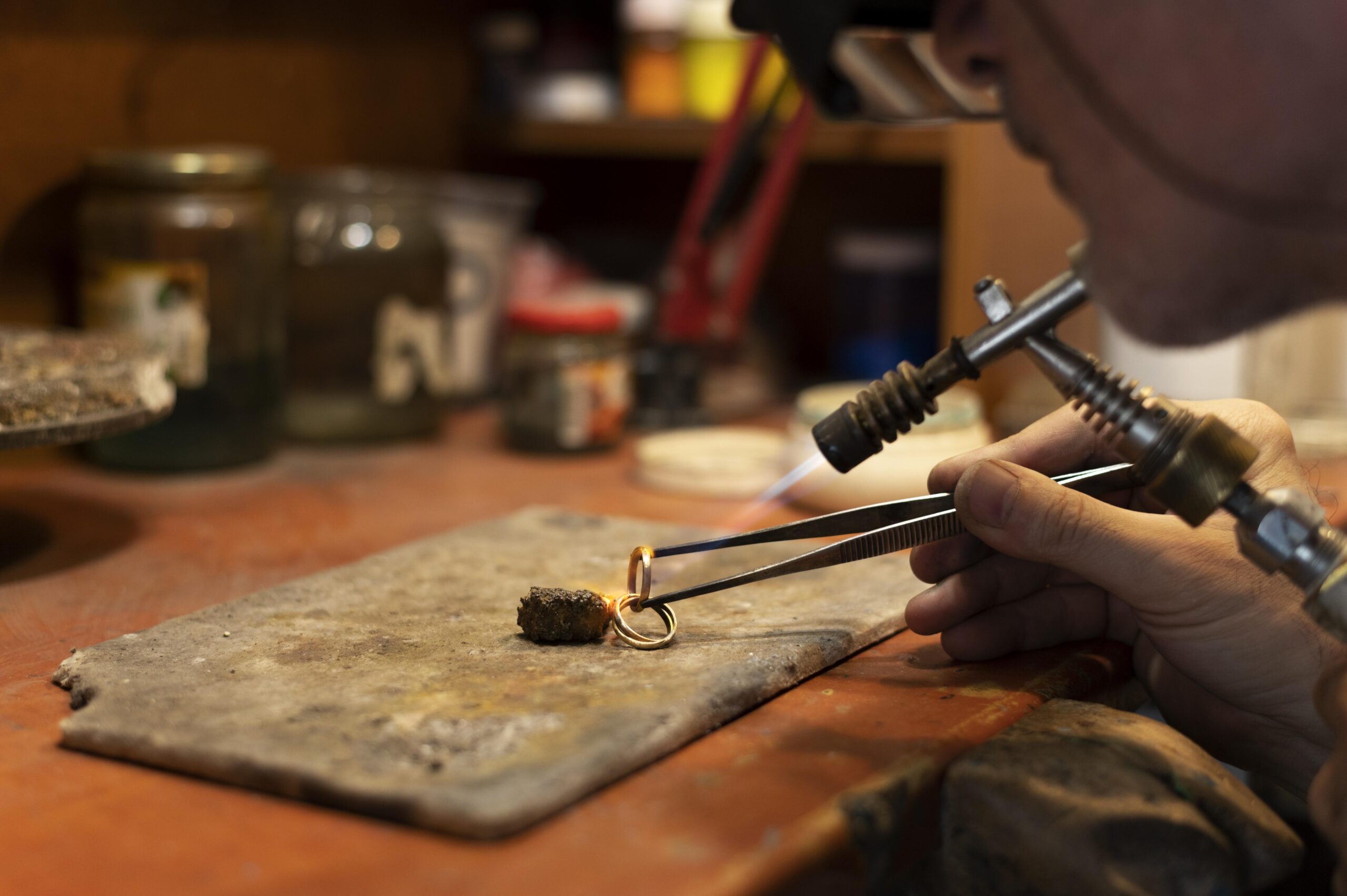
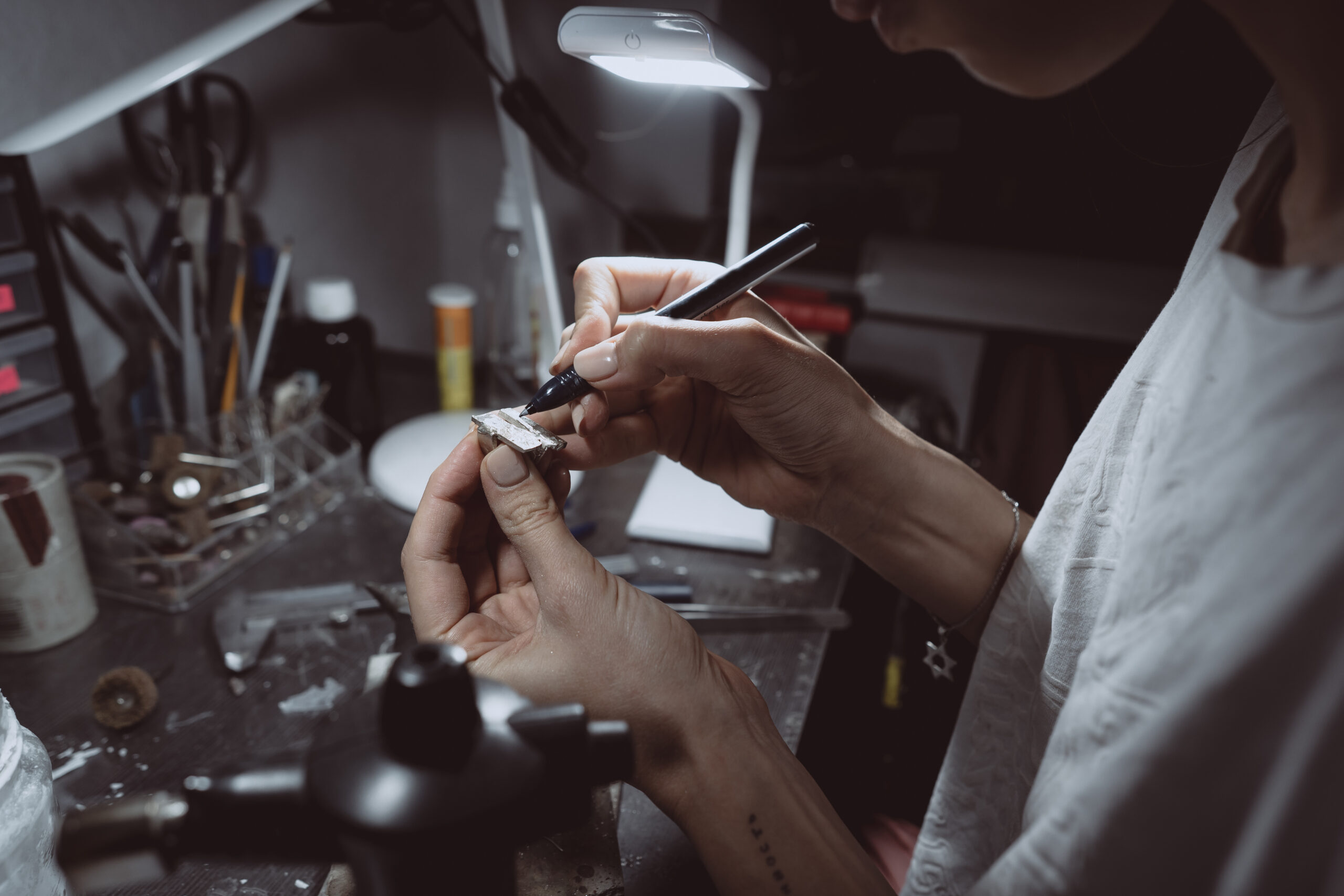
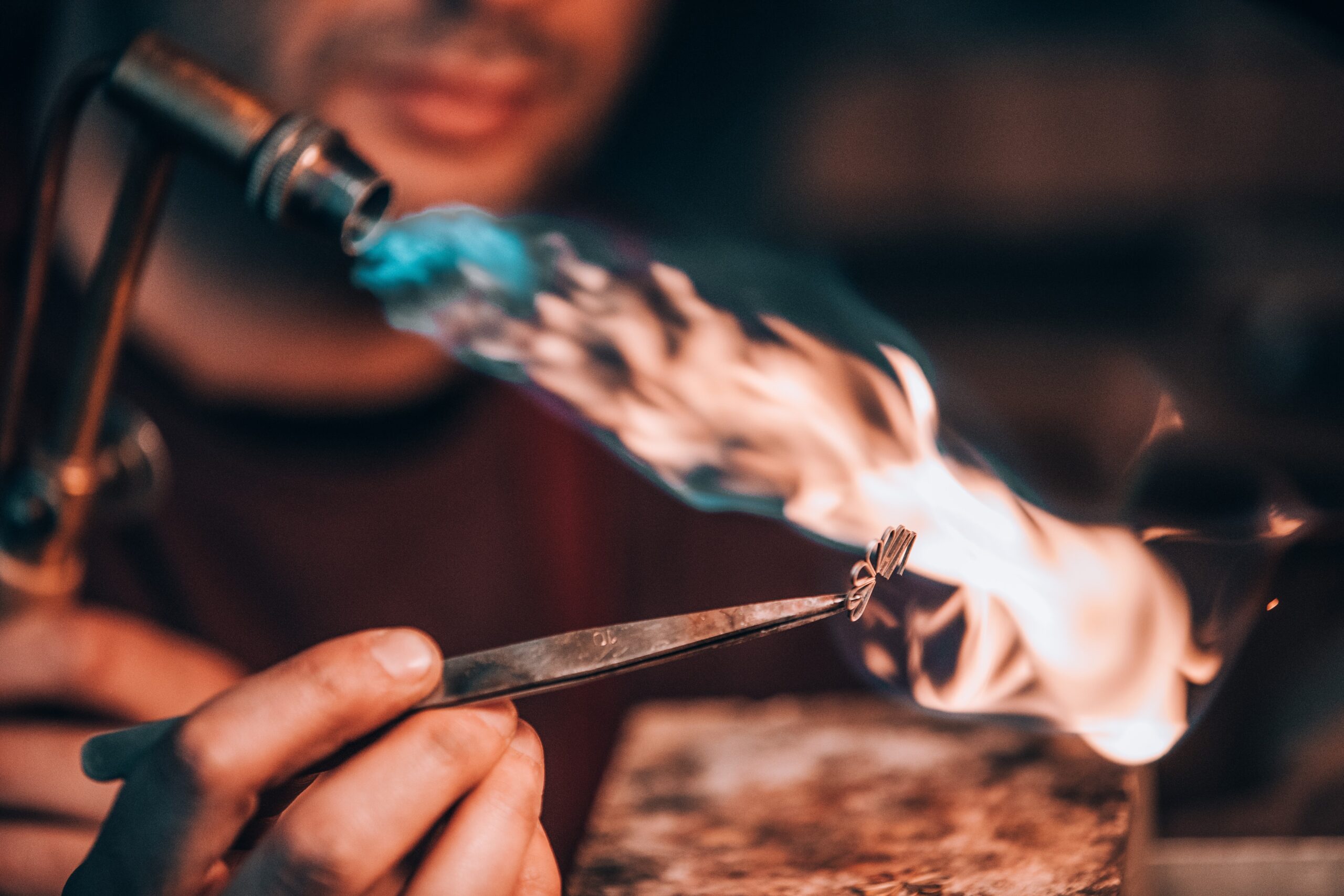
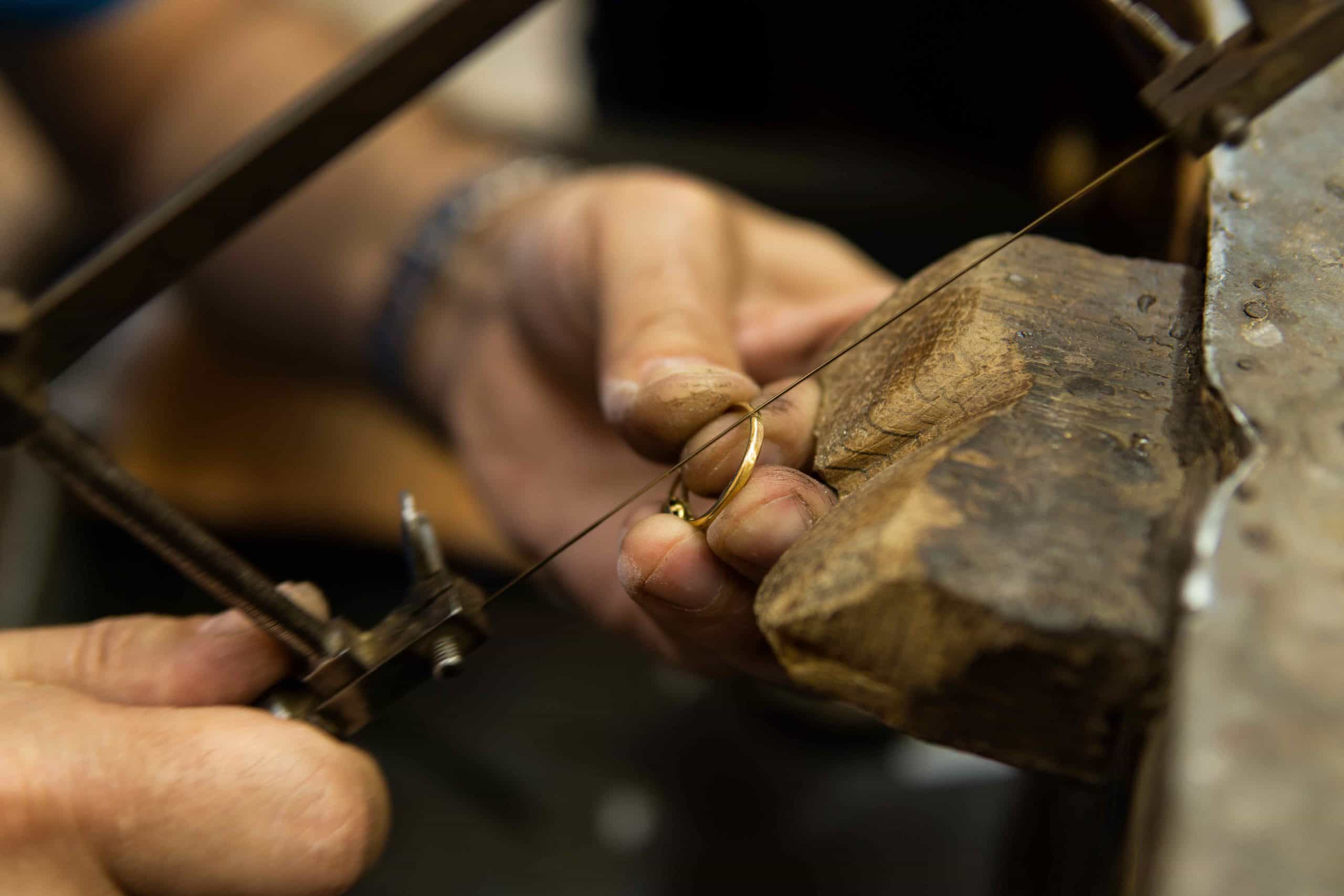
DEFINITION OF JEWELLERY MANUFACTURING PROCESS
Jewellery manufacturing refers to the process of producing pieces of adornment, often made from precious metals and gemstones or diamond. It requires several intricate steps, from design conception to the final finishing touches. Each stage requires a unique blend of artistry, craftsmanship, and technological expertise, resulting in pieces of enduring beauty and value
The Jewelry Manufacturing process include Many More Steps, from design to final Production. while There are different Methods and Techniques used depending on the Type of Jewelry Being Produced, Here is a General overview of the process:
1. DESIGNING EXPLANATION OF THE IMPORTACE OF DESIGN IN JEWELLERY MANUFACTURING : The Design phase is where the journey of a jewelry piece begins it is the cornerstone of the entire manufacturing process. A well-thought-out design ensures that the final piece is not only visually appealing but also comfortable to wear and durable. Furthermore, a unique design design can often become a brand’s signature, distinguishing it from competitors.
THE PROCESS OF CREATING A JEWELLERY DESIGN : Creating a jewelry design typically starts with a sketch. Designers first visualize the piece and then transfer their ideas onto paper. this initial sketch is then further refined, considering factors like the type of materials to be used, the target audience, and current market trends. Once the sketch is finalized, it is transformed into a 3D model using computer – Aided (CAD) software. The digital model allows the designer to view the piece from different angles and make any necessary adjustments. After approval, this design is then sent for the next stage in the manufacturing process : the creation of a wax models and casting.
2. WAX MODEL AND CASTING OR HAND CUTTING : The wax model, also know as wax pattern, is an exact replica of the final jewelry piece. it is created using the CAD design. A special wax is poured into a mold that matches the design, resulting in a detailed wax model. This wax model serves as the blueprint for the metal casting in the next step.


DISCUSSION OF THE CASTING PROCESS
Casting is the process of turning the wax model into a metal piece. The wax model is placed inside a casting cylinder, which is then filled with a plaster-like substance known as investment. Once the investment hardens, the cylinder is heated, causing the wax to melt and leave behind a perfect mould of the design.
Molten metal, typically gold or silver, is then poured into this mould. As the metal cools down, it solidifies, forming a rough version of the jewelry piece. The hardened investment is then broken away, revealing the casted jewelry piece ready for the next stages of manufacturing
3. FILING, GRINDING AND SAND BLASTING : After casting, the piece of jewelry often has rough edges and excess metal known as “sprues” from the casting process. Filing is used to smooth out these irregularities. Using a set of files with varying grit sizes, the jeweler meticulously works on the piece to remove these imperfections and shape the jewelry closer to its final form.
UNDERSTANDING GRINDING AND SANDBLASTING IN JEWELRY MANUFACTURING
Grinding and sandblasting are techniques used to further refine the surface of the jewelry pieces. Grinding uses abrasive tools to remove any remaining irregularities and achieve a uniform surface. sand blasting on the other hand, involves blasting the piece with small particles to give it a smooth and even finish. This step prepare the jewelry for assembly and polishing.
ASSEMBLED


4. ASSEMBLY : In many cases, a piece of jewelry consists of multiple components that need to be assembled. For instance, a ring may consist of the band and the setting for the gemstone or diamond. These parts are carefully soldered together using a fire gun tool and a soldering material. The assembled piece is then cooled and cleaned to remove any residue from the soldering process.
DISCUSSING THE TOOLS USED IN ASSEMBLY
The assembly stage requires a range of specialized tools. some of the most common ones include the soldering fire gun tool tweezers for holding small components, and a pickling solution for cleaning the piece after soldering. using these tools a jeweller can assemble the various components into a single cohesive piece.
GEMSTONE OR DIAMOND ASSEMBLE : Setting Diamond or gemstones in jewelry requires an extremely precise and delicate process. the jeweler employs specialized tools and techniques to securely set each stone in its designated place on the gold setting. Common setting techniques include prong setting (Claws that hold each Stone) bezel settings (A metal rim encircling each stone) channel settings (gems set in a groove) and pave setting (small stones set closely together)
QUALITY CONTROL : The jewelry piece undergoes a comprehensive quality control assessment to ensure that all Gemstone or Diamond are firmly and securely in place. it also ensures that the jewelry is free from any defects or imperfections.
POLISHING AND FINISHING


5. POLISHING AND FINISHING :
The final stage in the manufacturing process is polishing and finishing. Polishing involves using a rotating wheel coated with an abrasive compound to buff the jewelry piece. This step helps to remove any small scratches or marks and brings out the metal’s natural shine.
DETAILING THE FINISHING TPUCHES IN JEWELRY MANUFACTURING
The finishing touches often include setting any gemstones, engraving details, and applying any desired surface treatments. This could mean adding a patterned texture, applying a certain type of finish, or even adding color through processes like enamelling or rhodium plating
Once these final touches are added, the jewelry piece undergoes a thorough quality check. It is carefully inspected for any defects or inconsistencies. Only after passing this stringent quality control process is the piece finally ready to be packaged.
6. HALLMARKING AND CERTIFICATION : Depending on the country and local regulations, the jewelry may be hallmarked to certify the gold’s purity and authenticity. Additionally, certification may be obtained for the gemstones or diamonds, especially if they are of high value or quality.
DEFINITION : Hallmarking is the practice of marking or stamping a piece of jewelry or an object made of a precious metal with an official symbol or mark, called a hallmark, to indicate the metal’s composition and purity.
PURPOSE : Hallmarking assures consumers that the jewelry is made of genuine precious metal (e.g., gold, silver, platinum) and provides information about its fineness or purity, which is typically expressed as a percentage.
GOLD PURITY LEVELS OR HALLMARKS
1. 24K Gold : 100% pure gold
2. 22K Gold : 91.67% gold
3. 18K Gold : 75% gold
4. 14K Gold : 58.33% gold
5. 10K Gold: 41.67% gold
6. 9K Gold : 37.5% gold
7. 8K Gold : 33.33% gold
8. Final Inspection : A final inspection is carried out to confirm that the jewelry piece meets the design specifications, quality standards, and customer expectations
9. Packaging and Presentation : The finished jewelry is meticulously packaged and presented to the customer. This usually includes a jewelry box, certificates of authenticity, and care instructions.
CONCLUSION
The intricate process of jewelry manufacturing transforms raw materials into works of art that carry not just monetary value, but also emotional significance. Each step, from design to finish, requires a unique blend of creativity, craftsmanship, and technical skill. The result is a beautiful piece of jewelry that can be cherished for a lifetime.
So the next time you wear your favourite piece of jewelry, take a moment to appreciate the hard work and craftsmanship that went into bringing it to life. Each sparkle and shimmer is a testament to the journey it underwent, from an idea on a sketchpad to a tangible piece of beauty and elegance.